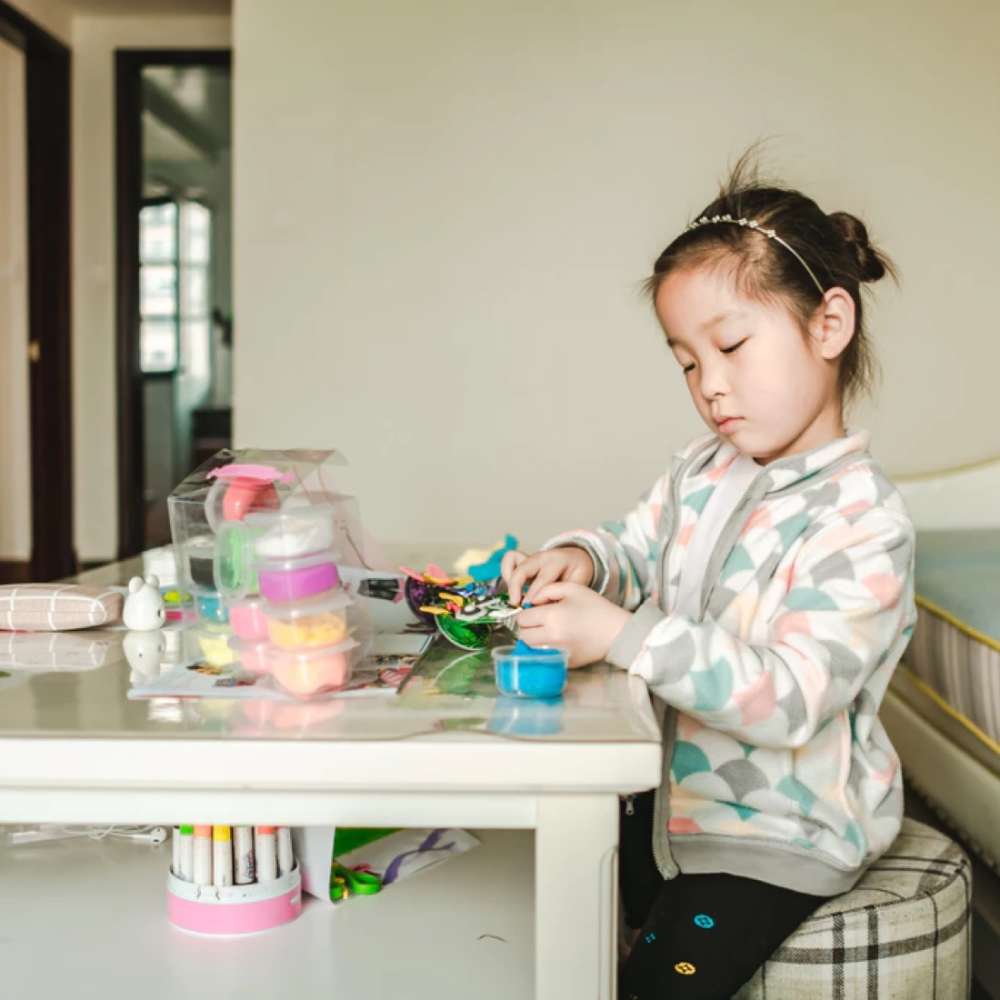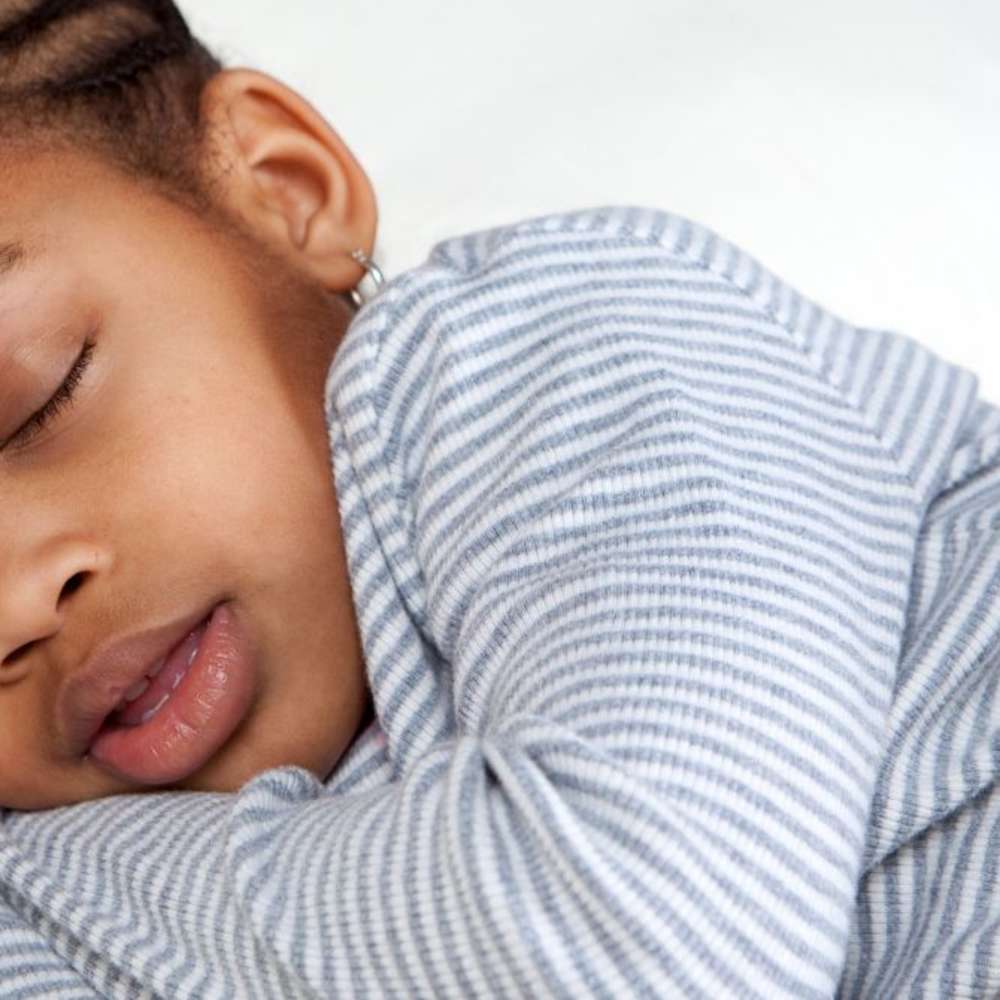How to get your kid to sleep after trick-or-treating

What’s scarier than a clown peeking in your bathroom window? For many of us parents, it’s the prospect of seeing our child’s sleep schedule disrupted, especially if you’ve put in a lot of effort to improve it.
We get it! That’s why we’re here to help hex-proof your Halloween, so your child can enjoy trick-or-treating without disturbing long-term sleep progress.
IN THIS ARTICLE:
What time does trick-or-treating typically start?
At what age do kids start trick-or-treating?
Will staying up late to trick-or-treat ruin their bedtime routine?
6 tips to help your kid sleep after Halloween fun
What time does trick-or-treating typically start?
Trick-or-treating start times vary according to community norms and personal preference. However, the average time for most kids tends to be between 5:30 - 6:00 pm, as the sun starts to set. Generally speaking, younger children tend to go out earlier, while older children may not start knocking on doors until later in the evening. It’s common to see toddlers and preschoolers making the rounds in neighborhoods in the afternoon when there’s still plenty of sunlight -- a good reminder to drive safely and keep an extra eye out if you’re heading to Halloween parties!
At what age do kids start trick-or-treating?
The majority of children start trick-or-treating by age 5. There are plenty of kids -- especially those with older siblings -- who start trick-or-treating around 2 or 3 years old.
There isn’t a hard rule here, as it’s entirely up to each parent’s comfort level and preference. You know your family best! That said, for those who are too young to understand there are free treats at stake, it can still be a fun experience to parade around in costume and share the excitement with others.

Will staying up late to trick-or-treat ruin their bedtime routine?
As enthusiastic as we are about sleep, we also know how special it is to share holiday traditions with your child. If a child’s well-rested, an occasional late night for a special event generally won’t wreak havoc on their long-term sleep habits.
However, a late night can temporarily impact sleep, especially if bedtime is more than an hour later. This can cause overtiredness, which commonly causes children to wake more than usual during the night or wake early the next morning.
If your child goes to bed late on Halloween night, you may need to move nap and/or bedtime 15 - 30 minutes earlier on Monday to help get back on track. Slightly earlier sleep times can be really helpful if your child wakes during the night, wakes very early, or seems particularly tired the next day.
Keep in mind that daylight saving time is the following weekend, so it’s likely that you might experience some sleep disruptions anyway in the days to come as we fall back an hour. It’s understandable if you want to enjoy some fun in the meantime!

6 tips to help your kid sleep after Halloween fun
1. Prioritize sleep before holiday events
Ensure your child is well rested in the days leading up to Halloween to help minimize the disruption to sleep. Aim to get your child a good night’s sleep on Saturday and don’t skimp on the nap on Sunday.
2. Go out early
Don’t be afraid to go trick-or-treating on the earlier side with young children. The sights and sounds that go along with trick-or-treating can be overwhelming for first-time trick-or-treaters. It can be scary too, particularly if it’s dark out. Going out early can cut down on the overlap with older children who are more likely to wear frightening costumes. It can also prevent bedtime from being pushed too late.
3. Keep it short
You may be surprised to find that your child’s treat bucket (and their emotional bucket) is full after walking just one or two blocks. Younger children may not need to go to many homes in order to have a fulfilling experience. Sticking to a shorter route can help kids from getting overstimulated, which will make it harder to settle down for sleep.
4. Don’t trick-or-treat on an empty stomach
Having a snack or early dinner before heading out can help prevent hunger-related meltdowns that can throw off bedtime. It can also make it easier for little ones to eat treats in moderation.
Since some children are sensitive to even small amounts of caffeine found in chocolate, it can help to put the sweets away an hour before bedtime, if possible. While this may not be possible on Halloween night, this will be something to remember in the days after.
5. Use pajamas as your base layer
While we don’t recommend rushing over your bedtime routine in order to get to bed on time (more on that in a minute), wearing pajamas under your child’s costume can help limit the number of transitions when bedtime does roll around. And if your kiddo does happen to fall asleep on the way home, at least you know they’re already dressed for bed.
6. Adjust the bedtime routine as needed
Whether you’ll want to do your normal bedtime routine or attempt to put your child directly into bed depends on their behavior. Are they all wound up or falling asleep on your shoulder? For kids that need to wind down, it can pay off to go through your normal bedtime routine, even if that means bedtime will be slightly later. Rushing through the routine can lead to a scenario where it takes them much longer to settle down and fall asleep, setting bedtime back even further.
On the other hand, if they’re falling asleep mid-peanut butter cup, then you’re probably better suited to slip off the costume and put them straight to bed.
Trick-or-treat alternatives
A final word for parents of kids who are particularly sensitive to overtiredness, get scared by creepy Halloween costumes, or for those families who aren’t comfortable trick-or-treating this year. It’s also 100% okay to hold off on traditional trick-or-treating if it doesn’t feel right this year.
Some communities have “trunk-or-treat” or other events geared toward young children, which are perfect for celebrating the spirit of Halloween, without the worries of frightening imagery or late bedtime. Or consider limiting trick-or-treating to a few friends or relatives’ homes, so that bedtime can come at the usual time and you’re less likely to run into nightmare-inducing characters. Chances are grandma won’t wear her Freddy Krueger mask when she answers the door, as long as you ask nicely.
Note: The content on this site is for informational purposes only and should not replace medical advice from your doctor, pediatrician, or medical professional. If you have questions or concerns, you should contact a medical professional.



